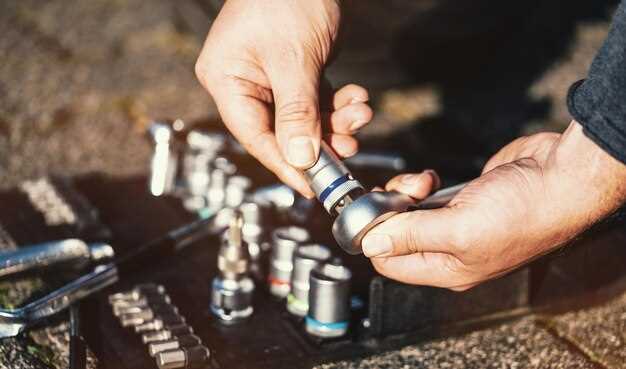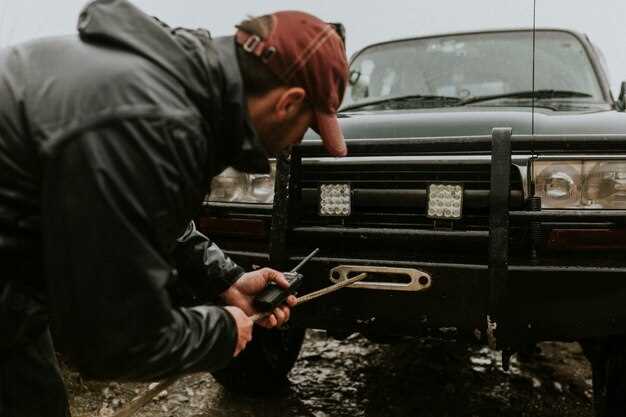
The 80 Series Land Cruiser is renowned for its durability and off-road capabilities, making it a favorite among enthusiasts and adventurers alike. However, like any vehicle, it is not immune to wear and tear, especially when it comes to critical components such as the clutch. Over time, the clutch can become less responsive, leading to difficulties in shifting gears and even compromising the overall driving experience.
Replacing the clutch on an 80 Series Land Cruiser can be a rewarding task for DIY mechanics and seasoned professionals. This guide aims to provide you with detailed steps to ensure a successful clutch replacement, enhancing your vehicle’s performance and extending its lifespan. From understanding the signs of clutch wear to the tools required for the job, you’ll find everything you need to tackle this essential maintenance task effectively.
Throughout this guide, we will discuss the various components involved in the clutch system, proper techniques for removal and installation, as well as tips for avoiding common pitfalls. A well-executed clutch replacement not only improves your vehicle’s drivability but also enhances your confidence as an owner/operator of the 80 Series Land Cruiser.
Identifying Symptoms of Clutch Failure in 80 Series Land Cruiser

Recognizing the signs of clutch failure in your 80 Series Land Cruiser is crucial for ensuring optimal performance and extending the life of your vehicle. There are several key symptoms to watch for that may indicate the need for clutch replacement.
One of the most common indicators is difficulty in shifting gears. If you experience grinding noises or a reluctance to engage into gear, it may signify a worn clutch plate or damaged components within the clutch assembly. This can lead to further complications if not addressed promptly.
Another telltale sign is the presence of a slipping clutch. If you notice that the engine revs increase without a corresponding increase in vehicle speed, this could mean that the clutch is unable to maintain proper pressure against the flywheel, necessitating a replacement.
A spongy or soft clutch pedal feel can also indicate issues with the hydraulic system or the clutch itself. If the pedal feels unusually light or requires excessive travel to engage, it might mean there’s a fluid leak or air in the hydraulic lines, which may lead to the need for clutch replacement.
Finally, unusual smells, particularly a burning odor, can signal overheating and degradation of clutch materials. This is often a result of prolonged slipping or heavy use, which can lead to complete clutch failure if not remedied quickly.
By being aware of these symptoms in your 80 Series Land Cruiser, you can take timely action to ensure that clutch replacement is performed before more extensive damage occurs, ultimately saving you time and money.
Step-by-Step Process for Clutch Removal and Installation

Removing and installing the clutch in an 80 Series Land Cruiser requires precision and attention to detail. Follow these steps to ensure a successful replacement of the clutch.
1. Preparation: Begin by parking the vehicle on a level surface and ensuring safety by engaging the parking brake. Disconnect the battery to prevent any electrical issues during the process.
2. Vehicle Lift: Raise the vehicle using a hydraulic jack and secure it with jack stands. Make sure the undercarriage is accessible to work on the transmission and clutch assembly.
3. Remove Drive Shaft: Locate and remove the drive shaft by unbolting it from the transfer case and rear differential. Mark the position of the bolts for easier reinstallation later.
4. Disconnect Transmission: Detach any components that connect to the transmission, such as shift linkage, sensors, and electrical connectors. Support the transmission with a jack and remove the mounting bolts.
5. Extract Transmission: Carefully slide the transmission back to disengage it from the engine. Be cautious of the weight and position of the transmission while moving it out.
6. Remove Clutch Assembly: Once the transmission is out, unbolt the clutch pressure plate from the flywheel. Remove the clutch disc, making sure to check for any signs of wear or damage on both the pressure plate and flywheel surfaces.
7. Inspect and Clean: Inspect the flywheel for cracks or severe wear. Clean the surface with a suitable cleaner to remove any debris or contaminants that might affect clutch performance.
8. Install New Clutch: Place the new clutch disc and pressure plate onto the flywheel, aligning them properly. Tighten the pressure plate bolts gradually in a crisscross pattern to ensure even pressure distribution.
9. Reattach Transmission: Align the transmission with the engine and slide it back into position. Secure it with the mounting bolts, ensuring everything is correctly fastened.
10. Reinstall Drive Shaft: Reattach the drive shaft, making sure to match the marks you made earlier for proper alignment. Tighten the bolts securely.
11. Final Checks: Reconnect all electrical components and the battery. Lower the vehicle carefully off the jack stands and perform a final check to ensure all parts are secured.
12. Test Drive: Start the engine and test the clutch operation. Pay attention to any unusual noises or difficulties in engaging gears. A successful replacement will ensure smooth operation and reliable performance.
Tools and Parts Needed for Clutch Replacement on 80 Series
When performing a clutch replacement on the 80 Series Land Cruiser, it is essential to have the right tools and parts to ensure a successful and efficient process. Below is a detailed list of what you will need.
Tools Required:
- Socket set – A comprehensive socket set, including both metric and imperial sizes, is crucial for removing various bolts and nuts.
- Ratchet and extensions – A ratchet along with extensions will help reach difficult areas, especially those in tight spaces.
- Torque wrench – This tool ensures that all bolts are tightened to the manufacturer’s specified torque, preventing issues.
- Flywheel lock tool – This is used to hold the flywheel in place while you unbolt the clutch assembly.
- Clutch alignment tool – Vital for properly aligning the new clutch disc with the flywheel, ensuring smooth engagement.
- Jack and jack stands – Essential for lifting the vehicle safely to access the transmission.
- Transmission jack – Helpful for lowering and raising the transmission when removing or installing it.
Parts Needed:
- Clutch kit – Typically includes the clutch disc, pressure plate, and release bearing; ensure compatibility with the 80 Series model.
- Flywheel (if necessary) – Inspect the flywheel for wear; resurfacing may be an option, or you might need a new one.
- Transmission fluid – Have sufficient fluid on hand to refill the transmission after the replacement.
- Pilot bearing – This may need to be replaced during the clutch installation for optimal performance.
- Rear main seal – Inspect for leaks; replacing it during the clutch job can save time later.
Gathering these tools and parts before starting the replacement will streamline the process and help avoid any delays. Ensure all components are of high quality to maintain the performance of your 80 Series Land Cruiser.
